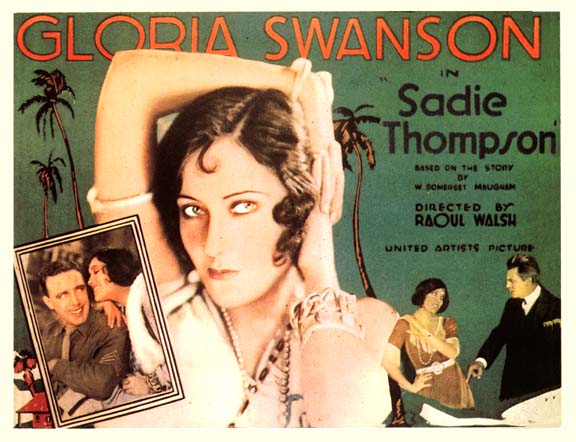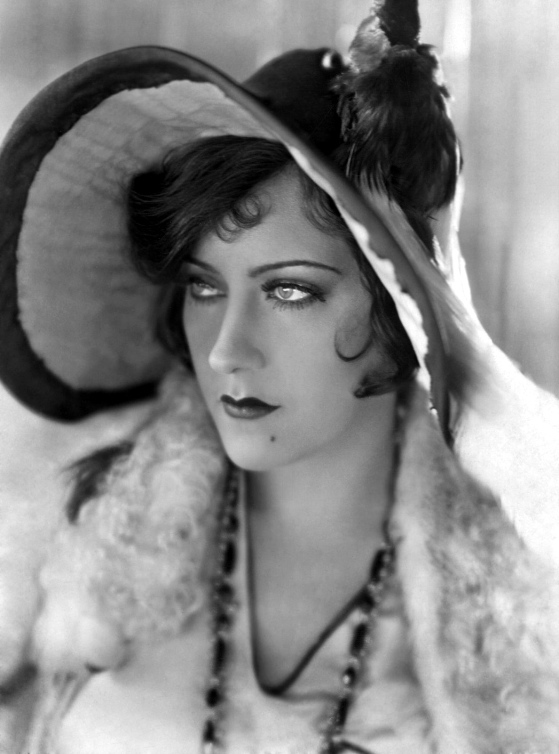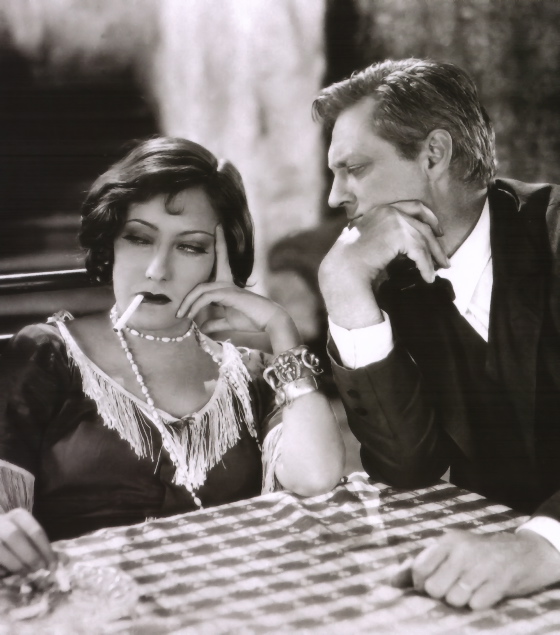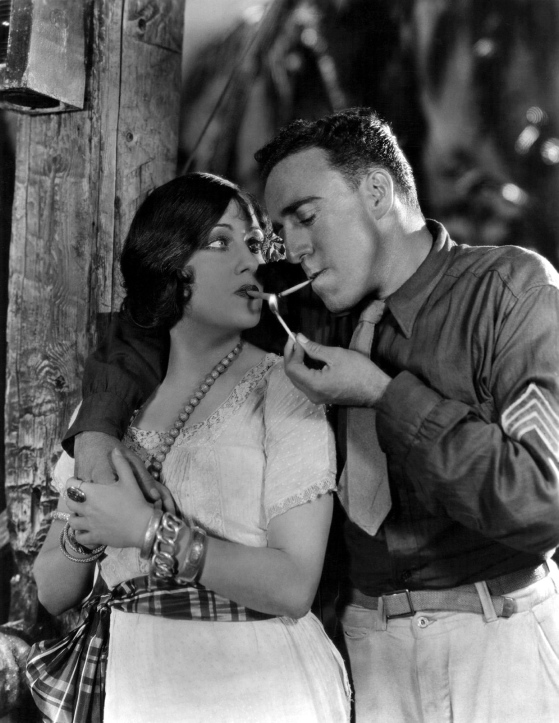
In 1947, an old, bitter, alcoholic has-been named D. W. Griffith
complained to a journalist that movies had lost something — “the
beauty of moving wind in the trees, the little movement in a beautiful
blowing on the blossoms in the trees” is how he summed it up. It’s sort
of an odd thing to say, since movies never stopped moving, and when
there are trees on screen you can often see the wind moving their
leaves.
But of course Griffith was talking about something more profound — harking
back to his own heyday as a filmmaker, when those moving blossoms were
not just a grace note, an accident of location, which might possibly
affect the taking of live sound, but in some real sense what movies
were about . . . movement, the illusion of movement in space, the
transformation of that illusory space, drawing us into it
imaginatively, investing it with emotional drama.
Griffith was bemoaning the loss of the discursive style of cinematic narrative,
in which the accumulation of passages of plastic transformation were
not simply the accouterments of style but the very method of
storytelling, of emotional communication, in film. He was bemoaning the
terrible efficiency of the studio method, in which those moving
blossoms became incidental decoration, garlands gracing the elegant,
ruthless machinery of narrative exposition.
Those of us who love Westerns love them in part because the Western genre
alone for many years after the coming of sound preserved that
discursive style — in which they way people and horses and things
moved and penetrated and transformed the spaces of a room or a street
or a landscape carried the burden of the drama, the narrative
exposition being pretty much formulaic and predictable.
Raoul Walsh, a Griffith protege, became a brilliant craftsman of the studio
style in the sound era, with an eye for plastic values which lifts most
of his work above the ordinary. But not far above the ordinary. His Sadie Thompson, from 1928, is a masterpiece, however — and a film
that in many ways defines the crossroads movies had come to in
Hollywood on the eve of sound.

Sadie Thompson is a very slick film, of great narrative economy — a studio
picture in that sense. But in scene after scene the narrative momentum
is suspended dreamily as we are invited to appreciate, to inhabit
intimate spaces and moments — to linger in them languorously. Swanson
plays a hardboiled dame, but we can sense the girlishness and innocence
that has survived her smarmy past — and Walsh takes time to let us
inside that quality of hers . . . not with a line of thought-balloon
dialogue, but in a rapturously lit scene at her window with O’Hara, in
which the way she looks at him illuminates her face from within,
absolutely breaks your heart. It’s like a movie within a movie, and
when you’re watching it, it seems as though this is what the whole
story is about.
Walsh doesn’t have a soundtrack to deliver the incessant noise of rain, so he
lingers on moments of transition between the wet outdoors and the dry
interiors, physical business with umbrellas and ponchos and damp
clothes. He luxuriates in exploring the fabulously atmospheric and
spatially intriguing inn set designed by William Cameron Menzies. He
rarely moves the camera, but when he does it has an emotional purpose
— Sadie being drawn into the interior of the island after she gets off
the ship, surrounded by the marines, O’Hara trying to carry her away
from Davidson and his creepy spell.
One of the most powerful moments is also one of the most subtle. Just before
the climax, Davidson looks down at the redeemed Sadie, slumped in a
wicker chair. She’s removed her make-up and straightened out her hair,
but still looks beautiful, in a severe way. Then Walsh pans down very
slightly from a close-up of Swanson’s face — just enough to let us see
her upper chest moving as she breathes. There’s no skin — we don’t
even see the curve of her breast under her dress — but the very
subtlety of the shift of attention is wildly suggestive and erotic. We
know exactly what Davidson is thinking.

Lionel Barrymore, as Davidson, looking gaunt and somewhat terrifying, plays an
extreme character, but his performance is beautifully nuanced,
particularly at the beginning. We feel the sensual pleasure he takes in
tormenting sinners, which prepares us for his surrender to another kind
of sensuality at the end. It’s far more effective than Walter Huston’s
more tasteful and buttoned-up take on the character in the 1932 sound
remake.

The simplicity and reserve of Walsh’s performance as O’Hara (above) serves the role well — he used his very inexperience as an actor to sell O’Hara’s shy, straightforward decency.
Swanson is brilliant — and brilliantly inconsistent. Her tough-girl swagger is
charming, and not entirely convincing, which makes her sweetness with
O’Hara, her innocent faith in his love, believable, and her sudden
breakdown in front of Davidson plausible as well . . . she was never as
hard and self-possessed as she seemed to be, and her first look into
the face of irrecoverable loss unhinges her completely. Joan Crawford’s
Sadie in the 1932 remake is a one-note impersonation by comparison, and
could have been played almost as well by a man in drag, which is what
Crawford sometimes suggests.
It’s a shame the last reel of the film has been lost — though the reconstruction of it on the Kino release is well-done and as satisfying as possible under the circumstances.
It’s a wonderful movie, with a foot in two different eras of Hollywood filmmaking, but with its heart and soul in Griffith’s.
